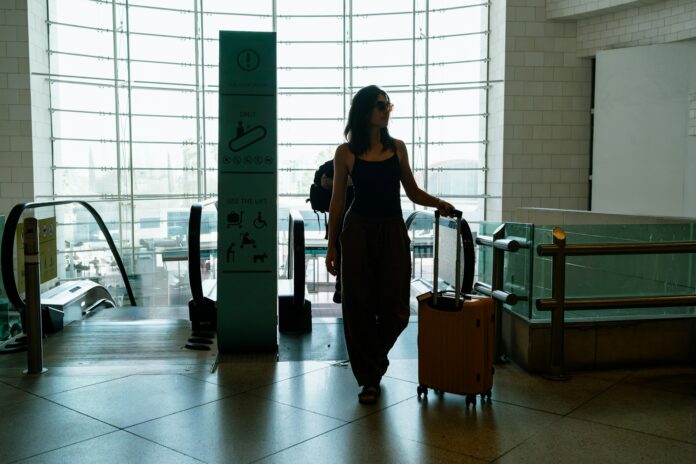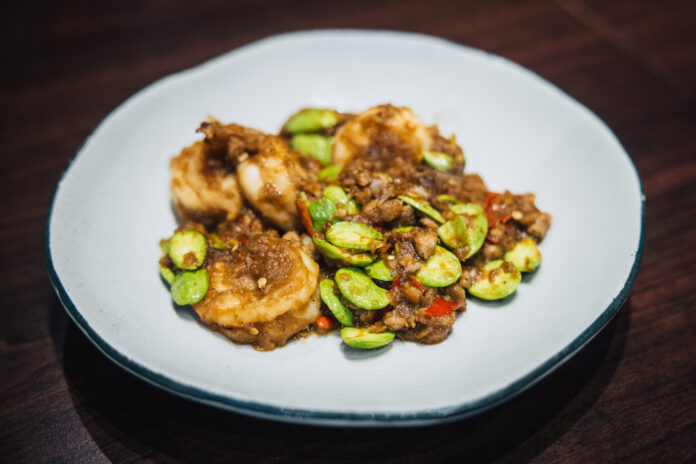We’ve all been there, we’ve all endured it, but that experience never seems to make the next time any easier. Practice here certainly doesn’t make perfect. Because trying to negotiate London and its underground with luggage certainly isn’t easy, especially at rush hour and if you’ve just arrived bleary eyed and jetlagged from the plane. There’s always a new hurdle to jump, a different obstacle to avoid, but with a little planning and foresight, you can ease that travel stress. Here’s how; our 7 tips for travelling with luggage in London.
Travel Outside The Busiest Times (& Know Which Days to Avoid)
London would simply not be able to function without the tube. It’s the quickest and most useful method of transport in the capital. Yet it’s also the most infuriating. Most meetings in the city begin with a complaint about the tube and the nightmare journey that just befell the commuter. And if you’re travelling with luggage in London, that nightmare could become your worst.
The traditional advice says avoid 7:30-9:30am and 5-7pm on weekdays, but there’s more nuance to it than that. According to recent data, Thursdays and Tuesdays are now the absolute worst days for tube travel, as hybrid working patterns mean fewer people brave the commute on Mondays and Fridays. Thursday evenings between 5-6pm have become the single busiest hour on the entire network – imagine sardines, but with less personal space and more tutting.
Here’s something that might save your sanity: TfL data shows that 20% fewer people travel between 7:30-8:00am compared to the 8:00-8:30am peak. Similarly, 16% fewer travel between 8:30-9:00am. That half-hour shift could mean the difference between standing room only and actually getting a seat. After 6:30pm, passenger numbers drop significantly, and the quietest weekday periods are between 8:45am and 5pm.
Just remember that if you’re carrying a rucksack on your back, remove it when you board and place it by your feet; it’s the Londoner’s biggest pet peeve if you don’t. Trust us, the death stares aren’t worth it.
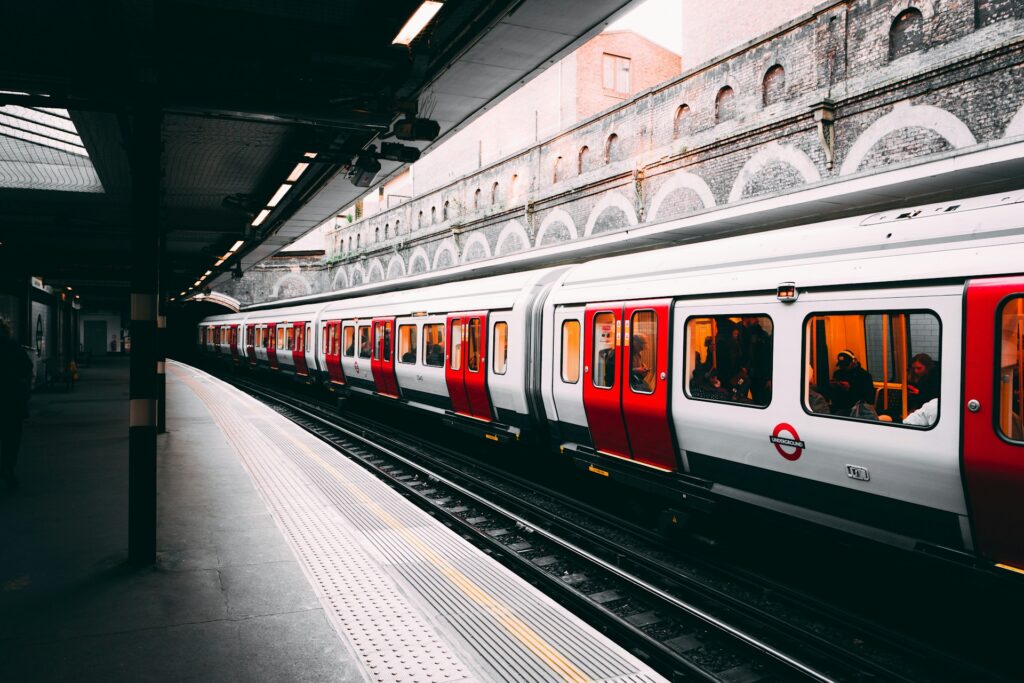
Download TfL Go & Actually Use Its Hidden Features
While there are dozens of London transport apps clamouring for your attention, TfL Go has quietly become the Swiss Army knife of tube travel. Yes, it shows you routes and train times, but if that’s all you’re using it for, you’re missing out on features that could transform your luggage-laden journey.
The app’s step-free mode is a game-changer. Toggle it on and watch as stations without lift access simply vanish from the map, leaving only those you can actually navigate with your suitcase. But here’s the clever bit – it shows real-time lift status. Covent Garden’s lift broken again? (Spoiler: it probably is.) You’ll know before you waste 20 minutes getting there.
The live crowding data is another underused gem. Each station displays current busyness levels in real-time. You might discover that while Green Park is having its usual evening meltdown, Bond Street, just one stop away, is relatively civilised. The app even tells you which carriage to board for the quickest exit at your destination – at King’s Cross, boarding at the front can save you a 200-metre tunnel trudge.
Pro tip: If you’re using contactless payment (and you should be), the app shows your last seven days of journey history without needing to create an account. Perfect for checking you haven’t been overcharged after that confusing zone 2/3 boundary journey.
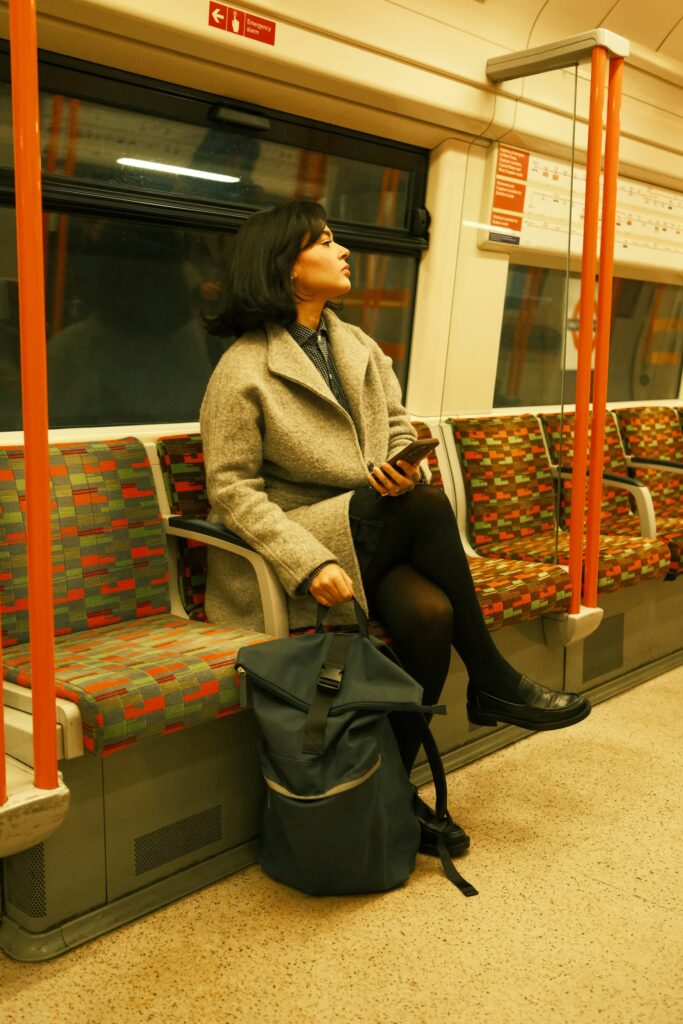
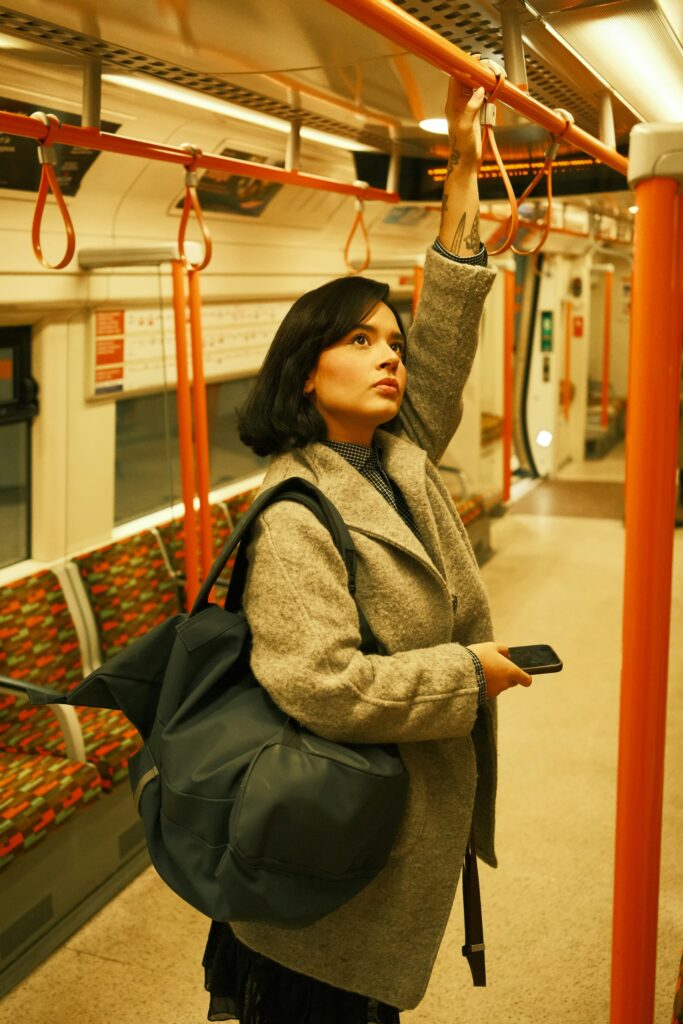
Embrace The Luggage Storage Revolution
Gone are the days of hunting for increasingly rare station lockers or queuing at expensive left luggage offices. London’s luggage storage has been quietly revolutionised by app-based services that are both cheaper and more convenient than traditional options.
Bounce luggage storage in London leads the pack with 467 locations across London at £3.90 per day, including $10,000 (around £7,500) baggage protection. Here’s what they don’t advertise prominently: many of their locations are in proper hotels. Their King’s Cross spot? It’s in the Premier Inn, meaning your bags are in an actual hotel luggage room with CCTV and professional staff, not stashed behind someone’s shop counter.
Do be aware that the luggage storage at hotels near airports often stays open later than station facilities. The London City Airport Hotel, for instance, accepts bags until 11pm for just £5 per day – perfect if you’re catching an early flight and want to enjoy your last evening in London unburdened.
Read: Where to eat at London Heathrow
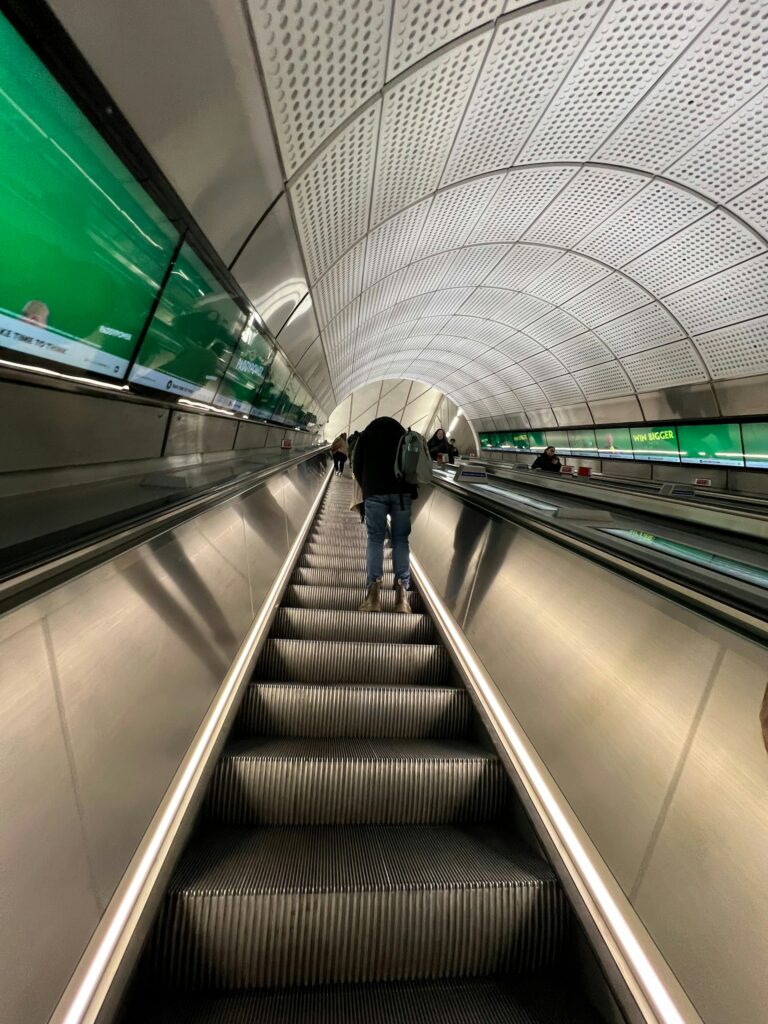
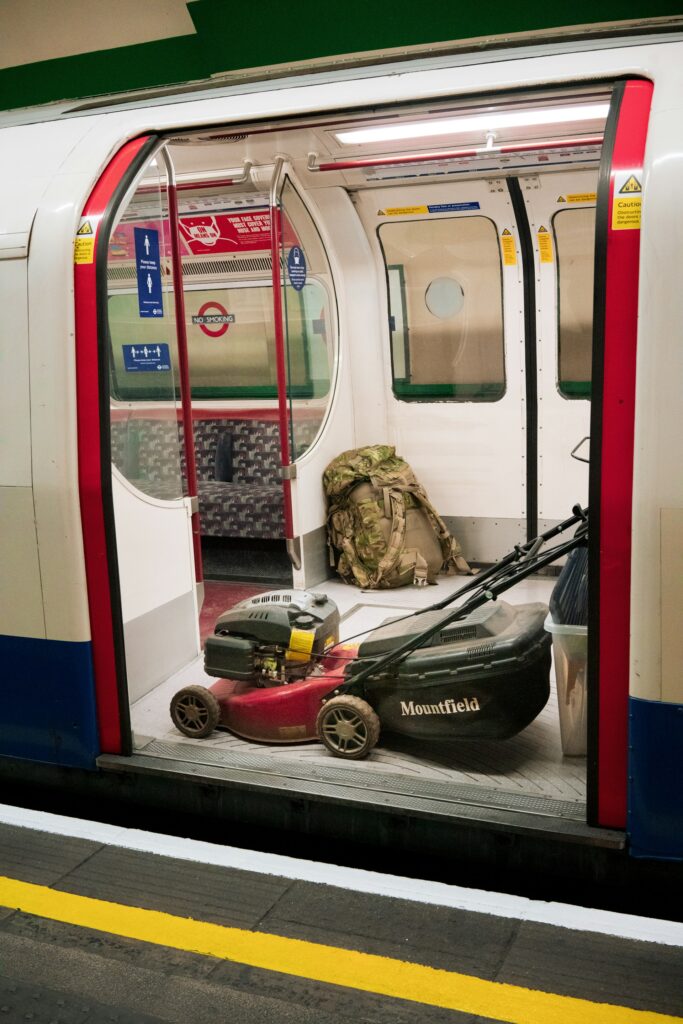
Forget Everything You Know About Oyster Cards
If you’re still planning to buy an Oyster card, we need to talk. Unless you’re visiting from a country without contactless banking (or you’re deeply nostalgic for 2003), there’s simply no reason to bother with Oyster anymore.
Just tap your contactless debit or credit card, phone, or smartwatch on the yellow readers. The system automatically calculates the best fare and caps your spending at £8.90 daily or £44.70 weekly for zones 1-2. That weekly cap runs Monday to Sunday, so after about five days of travel, you’re essentially riding for free.
For international visitors, yes, your bank might charge foreign transaction fees. But consider this: no £7 deposit to reclaim, no queuing at machines to top up, no leftover credit to worry about, and no extra card to lose. Cards like Revolut, Wise, or Monzo avoid foreign transaction charges entirely and are worth setting up before you travel.
Here’s a clever workaround if you’re travelling as a couple with one card: add it to your phone’s wallet (Apple Pay or Google Pay). One person uses the physical card, the other uses the phone – the system treats them as separate payment methods. Register your card at contactless.tfl.gov.uk to check your journey history without creating an account, useful for verifying you’ve been charged correctly.
Master The Step-Free Network (It’s Better Than You Think)
London now boasts 93 step-free tube stations – a significant improvement from even a few years ago. But ‘step-free’ isn’t always as straightforward as it sounds, and knowing the nuances can save you from nasty surprises.
The blue wheelchair symbol means full step-free access from street to train with minimal gaps. You’ll find this on all 41 Elizabeth line stations and the newer Jubilee line stations from Westminster to Stratford. These are your gold-standard, luggage-friendly options.
The white wheelchair symbol indicates step-free access only to the platform – you’ll still face a significant gap or step when boarding. Stations like Victoria and Brixton fall into this category. It’s manageable with a small suitcase but challenging with multiple bags or a heavy case.
Some parts of the network remain luggage nightmares. The Northern line south of Elephant & Castle is particularly problematic – only Morden at the very end has step-free access. Most Zone 1 Central line stations involve significant stairs or ancient lifts. The Piccadilly line between Hyde Park Corner and Arnos Grove is another desert of accessibility.
Your best bet for cross-London journeys with luggage? The Elizabeth line for east-west travel (Paddington to Liverpool Street in just 10 minutes), the Victoria line for north-south routes (it has the most central step-free stations), or even Thameslink trains from St Pancras and Blackfriars as an alternative to the Northern line.
Read: London’s most pushchair-friendly sites and attractions

Position Yourself Like A Local
Veterans of the London Underground know that where you stand on the platform can make or break your journey. This becomes even more crucial when you’re managing luggage. Most passengers naturally cluster around platform entrances, creating scrums when trains arrive. The savvy traveller heads to the ends of the platform, where carriages are noticeably less crowded.
At major interchanges, specific positioning can save you considerable hassle. At Bank, using the last two carriages for the Central line interchange helps you avoid the station’s notorious curved corridors. At King’s Cross, front carriages position you perfectly for Eurostar connections, while rear carriages give direct access to the Metropolitan and Hammersmith & City lines. Victoria’s rear carriages have direct lift access to the mainline station, bypassing the main concourse chaos entirely.
Look for ‘Board here’ signs on platform walls at step-free stations. These indicate raised sections where the platform has been built up to minimise the gap to the train – invaluable when you’re wrestling with heavy bags.
Here’s perhaps the most useful advice for busy stations: if the first train is absolutely rammed, wait. Seriously. During peak times, trains run every 2-3 minutes on most lines. That first packed train clears the platform backlog, meaning the second one often has actual breathing room. Your blood pressure will thank you.
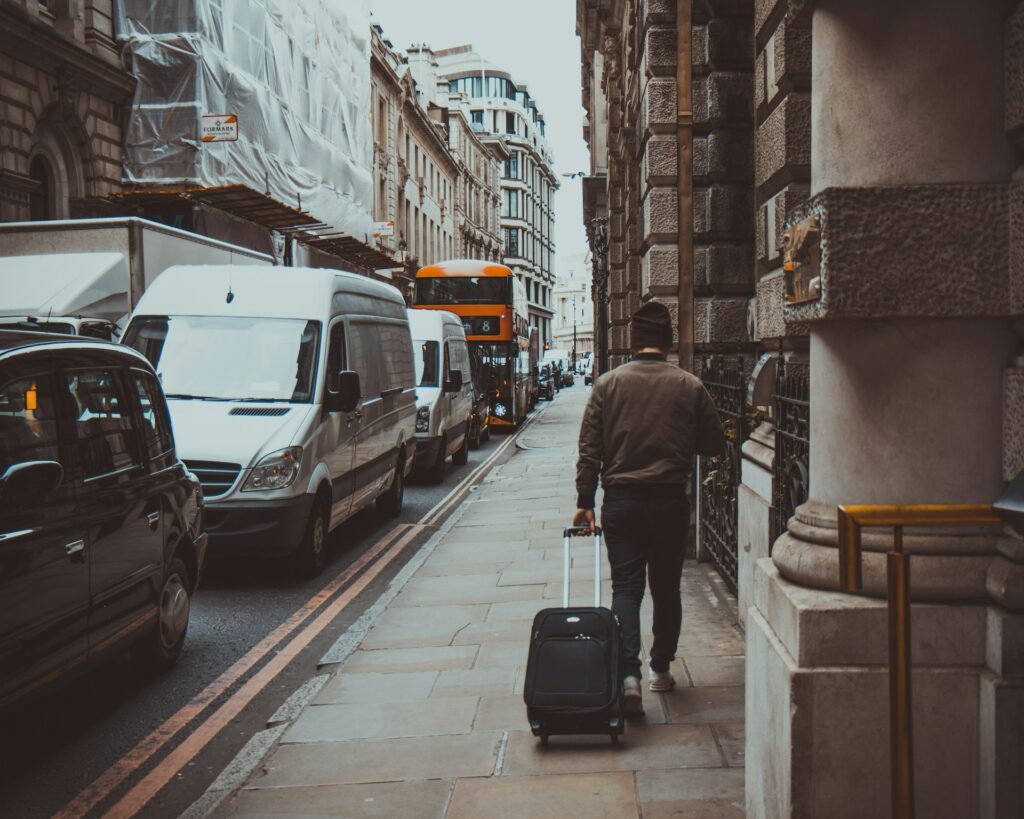
Know When To Abandon Ship
Sometimes the smartest move with luggage is to avoid the tube entirely. The Elizabeth line has transformed airport connections – Heathrow to Paddington in 27 minutes with air conditioning, spacious luggage areas, and trains every 5 minutes. Compare that to the Piccadilly line’s hour-long sweatbox experience and the choice is obvious.
London’s bus network has also upped its game. The new Superloop express routes circle outer London with limited stops, while traditional routes offer step-free boarding and drivers who’ll actually wait while you wrestle your suitcase aboard. The 38 from Victoria to Angel takes 35 minutes but you’ll see London from the top deck – try doing that underground.
For riverside destinations, Thames Clippers welcome bikes and large luggage, have bars on board, and offer spectacular views. Westminster to Greenwich takes 40 minutes and costs the same as the tube with your daily cap. During summer, it’s infinitely more pleasant than the Central line.
Here’s our 15-minute rule for luggage travel: if your tube journey would take less than 15 minutes, a taxi or Uber often makes more sense. By the time you’ve wrestled your bags down stairs or waited for lifts, navigated platforms, and hauled everything back up, you could be at your destination. Victoria to Pimlico? That’s a £7-10 cab ride versus struggling through Victoria’s crowds. Covent Garden to Leicester Square? The taxi will cost about the same as two tube fares and save you navigating Covent Garden’s 193 steps (yes, we counted) or queueing for its perpetually broken lift.
The Bottom Line
The London Underground remains an engineering marvel, but let’s be honest – it was designed in the Victorian era when luggage meant a gentleman’s walking stick and perhaps a small valise. Modern travel, with its wheelie cases, laptop bags, and duty-free hauls, requires modern solutions.
Book your luggage storage through apps, travel on Mondays or Fridays rather than Thursdays, use the Elizabeth line whenever humanly possible, and always have a Plan B. Check lift status before you travel, position yourself strategically on platforms, and remember that sometimes the best route isn’t underground at all.
And if all else fails? Black cabs have spacious boots, drivers who know every shortcut in London, and doors wide enough for the largest suitcase. Yes, they cost more than the tube, but can you really put a price on arriving at your destination with both your luggage and your sanity intact?
Safe travels, and mind the gap (especially with those bags)!

